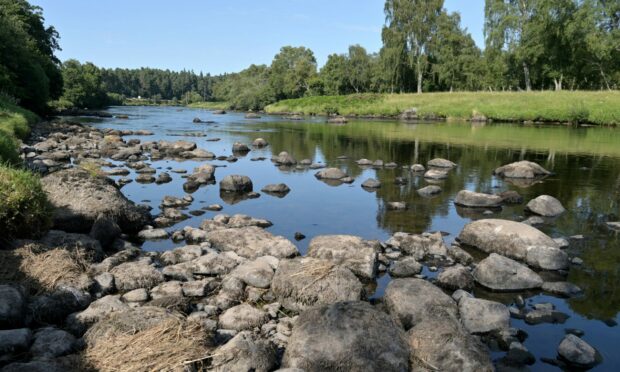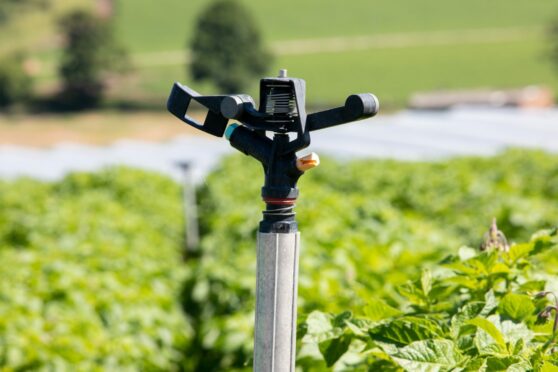A week of hot and dry weather means many parts of the country remain at an increased risk of water scarcity, according to the latest situation report from the Scottish Environment Protection Agency (Sepa).
The Dee, Ythan, Firth of Tay, Firth of Forth, Almond and Tyne catchments remain at moderate scarcity levels, and they have been joined by the Don catchment area, while the Leven in Dunbartonshire has reached early warning level.
Sepa says it is monitoring the situation and co-ordinating steps to manage water resources, including advising businesses that abstract water in the above areas to only do so when absolutely necessary.
Businesses are also asked to stagger their operations, irrigate at night where possible, reduce volumes and durations or suspend abstractions altogether.
The agency’s senior water and land manager, Jennifer Leonard, said that while some rain is forecast, it is unlikely there will be enough to improve conditions.
“We want to work with businesses to plan their water usage long-term so that we can preserve this vital resource. Not only will that protect Scotland’s rivers and lochs, but it will minimise business risks as well,” she said.
“In the meantime, we stand ready to offer advice and support to businesses affected by the current conditions.”
The dry conditions have already posed challenges for farmers, put natural habitats under stress and fuelled wildfires, according to the UK Centre for Ecology and Hydrology (UKCEH).
Data from UKCEH shows that average river flows for June were “below normal” or “exceptionally low” across most of the country.
River flows for most catchments have been exceptionally low since the spring, and in many rivers are approaching or below the levels at the equivalent time of year in past years of drought.
In a blog on the situation, Jamie Hannaford, principal hydrologist, said: “Increased demand from the heatwave has put short-term pressure on water supply, and should river flows continue to fall, there will be growing threats to water supply later in the year.
“Even now, low river flows are causing environmental stress in aquatic ecosystems and the dry soils have resulted in challenges for farmers, caused stressed terrestrial habitats and severe wildfires following the recent heatwave.”
Soils have also dried up, with figures from July 18 showing soil moisture was exceptionally low for many sites in southern, central and eastern England.
Groundwater levels were below normal or notably low in many boreholes around the country in June, and reservoir stocks were substantially below average, reflecting the low river flows, UKCEH said.
They were the lowest on record for June in Wales while some other reservoirs in parts of the Midlands and south-west England were 20% below average.
Current data suggests reservoir levels have continued to decline due to high evaporation and increased demand for water during the hot July spell.

